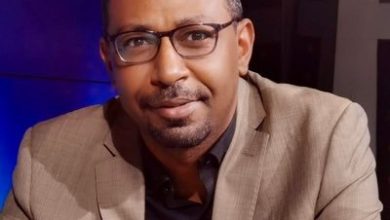Opinion
Eritrea: When Love Gets Mixed with Blood! (2)

As I See
Adel El-Baz
1
The mingling of love and blood with the Eritrean people was not a fleeting historical event, but rather an outcome deeply rooted in cultural and religious history, reaching far back in time. Since the Marib Dam burst, its waves poured over the plains and mountains of Yemen, making Eritrea, by proximity, a natural destination for migrants. Eritrea welcomed waves of Yemeni migrations, which brought with them language and culture, shaping a part of Eritrean cultural identity that persists to this day.
2
Eritrea embraced the first wave of Muslims during the “first migration” of the Prophet Muhammad’s companions in the fifth year of his prophethood, directing them toward Eritrean shores. Here, the first mosque in Islam was built in the “Ras Madar” area in present-day Massawa. These migrations left a profound impact on the formation of modern Eritrea, creating strong bonds with Sudan along its eastern border.
In the border areas stretching 605 kilometers, the first groups of Eritrean armed resistance were formed. Remarkably, they were all Sudanese soldiers serving in the Sudanese army’s Eastern Corps, including figures like Taher Salem, Mohamed Said Adam, Mohamed Tesfa Nidros, and Saleh Hadouq, among others, in 1961.
The prominent novelist Mohamed Said Naoud, author of Winter, was one of the founders of the Eritrean Liberation Front. He lived in Sudan and also co-founded the Communist Party in Kassala. Narratives suggest that Naoud, when he decided to join the Eritrean Liberation Front, sought permission from the Party’s Secretary-General at the time, Abdel Khaleq Mahgoub. He granted his approval and provided Naoud with weapons to support the Eritrean Liberation Front’s struggle.
Across this border, tribes and ethnic groups intermingle to such an extent that it’s difficult to distinguish a Sudanese from an Eritrean. Love and blood intertwined as tribes intermarried and lived together as one extended family for hundreds of years, ignoring colonial borders. More than twenty tribes live divided by an imaginary line, and numerous stories, novels, and memoirs tell of this shared life. The shared social and political history didn’t suddenly appear; the deep bonds between the Eritrean and Sudanese people, through their common struggle during the Eritrean revolution and current conflicts in Sudan, strengthened and illuminated these ties.
3
Strolling through the beautiful capital, Asmara, with its stunning Italian architecture and enchanting atmosphere, one cannot miss standing on the prestigious “Komishtato” (Freedom Now) Street, near landmarks like the Roma and Ampero Cinemas and ancient churches. Among the must-see places is the Martyrs’ Cemetery in the heart of the capital.
We were deeply moved to see dozens of graves of Sudanese who fought alongside the British against Italian colonialism in the Battle of Keren, which took place from February 5 to April 1, 1941, during World War II. The colonial Italian army fought to defend Italian control over Eritrea against the invading British and Commonwealth forces. At that time, the city of Keren in Italian Eritrea held strategic importance for both the Italian and British forces. Roads and railways passing through the city served as the main passage to Asmara, Eritrea’s colonial capital, and Massawa, an important port on the Red Sea. These Sudanese, buried in the cemetery, were part of the unit the British brought to help halt the Italian advance toward Kassala. Although the Italians did reach Kassala, they stayed only briefly due to the Eastern Sudanese people’s resistance (1941).
4
During a two-hour conversation with President Isaias Afwerki, I closely observed his expressions, body language, and sensitivity regarding certain topics. I noticed that two issues particularly stirred him: foreign interventions and the importance of Sudan for Africa and the Horn of Africa.
President Isaias firmly believes that foreign interventions are the root of the region’s suffering. His stance is likely influenced by Eritrea’s long history with foreign interference, starting with Italy’s deception when it acquired land near the Assab port under the guise of investment, only to transform it into a colony. From there, Italy’s project to occupy all of Eritrea began and eventually succeeded.
Eritrea’s resilience in facing a long-standing American and Western blockade, alongside accusations of terrorism and other charges, subjected it to prolonged sanctions. A similar plot has targeted Sudan, but Eritrea learned how to endure, while Sudan, succumbing to Western agendas, now pays the price of these persistent external pressures.
5
When President Isaias speaks about Sudan, his tone becomes passionate and animated. With his extensive experience, he is convinced that the Sudanese army will ultimately prevail. However, he currently advocates for unified efforts against the common enemy, lamenting the wasted time on what he calls political bazaars and forums where agenda-driven countries push their interests. He has refused to partake in such arenas.
6
When President Isaias speaks, one feels he stands on solid ground like Eritrea’s mountains—a ground forged by experience, historical events, and resilience. He often develops a unique perspective to analyze Africa and the broader region (the Red Sea/Gulf/Horn of Africa) and even the world. Always able to chart Eritrea’s path forward without compromising its sovereignty.



